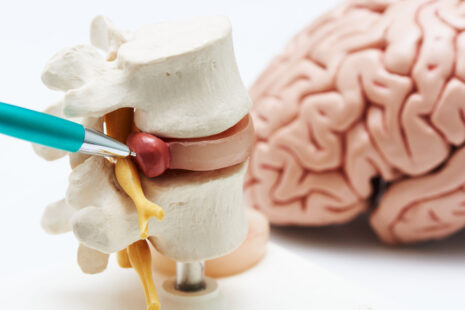Diagnosing a torn rotator cuff typically involves a combination of clinical evaluation and imaging tests conducted by a healthcare professional. Here’s an overview of the process used to diagnose a rotator cuff tear…
Clinical Evaluation
- Medical History – The doctor will start with a detailed medical history, asking about the onset of symptoms, any specific injury that occurred, and activities or movements that exacerbate the pain.
- Physical Examination – The physical exam involves several tests to assess shoulder strength, range of motion, and pain. These tests help pinpoint the affected tendons and gauge the severity of the injury. Common tests include…
- Neer’s Sign – Pain elicited by pressing on the scapula and raising the arm.
- Hawkins-Kennedy Test – Pain triggered by flexing the shoulder and elbow to 90 degrees, then internally rotating the arm.
- Drop Arm Test – Inability to hold the arm elevated in a horizontal position or control its descent, indicating a possible rotator cuff tear.
Imaging Tests
Imaging tests provide detailed pictures of the structures within your shoulder, helping to confirm the diagnosis and the extent of a tear.
- X-rays – While X-rays cannot show soft tissues like the rotator cuff tendons, they can reveal bone spurs or other potential causes of pain in the shoulder area.
- Ultrasound – This test uses sound waves to produce images of the soft tissues. It’s useful for assessing the condition of the rotator cuff tendons and can show tears in real time as the shoulder moves.
- Magnetic Resonance Imaging (MRI) – MRI scans are highly effective in visualizing rotator cuff tears. They provide detailed images of both the soft tissues and bones, showing the extent of the tear and its exact location. MRIs can also reveal other shoulder conditions that may be contributing to the symptoms.
Further Evaluation
In some cases, if the diagnosis is still uncertain or if there’s a need to assess other internal shoulder problems, the doctor may recommend an arthrogram. This involves injecting a dye into the shoulder joint before conducting an MRI or X-ray, providing a clearer contrast of the structures within the shoulder.
Conclusion
The process of diagnosing a torn rotator cuff usually starts with a clinical evaluation, including a physical exam and a review of the patient’s medical history, and is followed by imaging tests like X-rays, ultrasound, or MRI for a definitive diagnosis. The choice of tests will depend on the clinical findings and the severity of symptoms. Following diagnosis, treatment options can range from conservative measures like physical therapy and rest to more invasive procedures such as injections or surgery, depending on the tear’s severity and the patient’s overall health and activity level.




